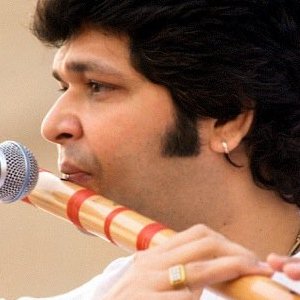
DV Paluskar countless times, he also performed with vocalists like Hirabai Barodekar and Kishori Amonkar. DK Datar had toured countless countries and accompanied a host of eminent vocalists at a great number of prestigious music festivals like the Sawai Gandharva of Pune and Saptak of Ahmedabad. Though Datar could play classical music as well, his speciality was the bhajan and thumri (devotional and folk-inspired music).īy the age of 85, Pt. Deodhar, who ran one of the most reputable academies in Mumbai at the time. He also received aid from another one of Pt. Vigneshwar Shastri, but also with the well-known vocalist of the Gwalior gharana, Pt. This style possibly developed as a result of his studies not just with Pt. Jog, Datar is considered one of the pioneers of the gayaki ang on violin. D K Datar, whose calm exposition of raagas and unique gayaki ang (the use of techniques usually used only for singing) gave audiences the feeling that his violin was literally singing. On October 10 this year, the music community lost eminent violinist Pt. He passed away on September 29 this year, aged 83. Tulsidas taught “lovingly and freely” and has left behind a legacy of students. He is also known to have taken interest in the violin. Tulsidas also mastered the leg-harmonium, an organ that is used primarily in Marathi natyasangeet (stage musicals), which employs the use of the feet for air flow. In addition to the traditional harmonium, Pt. He was also known for developing interesting finger techniques, having been trained under various instrumentalists (you can hear his unique take on the popular bhajan Payo Ji Maine Ram Ratan Dhan Payo here). For example, he played the harmonium in the Sarangi ang by imparting the qualities of the Sarangi, a string instrument, into his melodic phrases and approach to every note.
#PT HARIPRASAD CHAURASIA BIOGRAPHY HOW TO#
Tulsidas also learned how to incorporate in it the best characteristics of other Indian classical instruments. Going on to become a maestro in playing this one instrument, Pt. “A true artist is one who understands the strong and weak points of his instrument.” – From a 2001 interviewĪs a young boy growing up in Goa, Tulsidas Borkar was naturally drawn to the sound of the harmonium that he often heard during temple prayers. Nikhil Banerjee, Nityanand Haldipurkar, Meena Ben Sukankar, Nanda Ji and Basant Kabra. The world, however, continues to hear the echoes of her music from afar, through her students, some of whom have become the most well-known musicians of their era, like Pt. One definitive thing to emerge from it was that Annapurna Devi put a stop to all public performances after their separation, and dedicated her life only to the private study of music. The music community is familiar with the controversies surrounding this marriage. Ravi Shankar, who was her father’s disciple. In an article published in Navneet Samarpan, it is said that Annapurna Devi retreated into her bedroom from time to time and prayed to the photo of her father so that the wisdom that was given to her could be passed on in its truest form to her students, who lovingly called her guru maa.Īt the tender age of 14, Devi’s marriage was arranged to none other than the sitar player Pt. In her, he saw “infinite patience and a calm mind.” So he chose to forgo the popular and easily digestible sitar, and teach her a similar but more specialized instrument, surbahar, instead, based on the meditative dhrupad style of singing. But one day, seeing how the 10-year-old Annapurna Devi, with no musical training, corrected her older brother’s incorrect exposition of a raag, Allauddin Khan started imparting to her his extensive knowledge. Her father, however, had initially refused to train her for fear that this would make her an unsuitable wife and daughter-in-law.

Born in Madhya Pradesh, Devi began learning music from a young age from the able hands of her father, the sitarist Ustad Allauddin Khan.

On October 13 this year, musician and guru Annapurna Devi passed away in Mumbai.

– From the 2005 biography ‘Annapurna Devi: An Unheard Melody’

“I have great respect for women who stand up for what they believe in and fight for the cause of women against all odds.” D K Katar, an engineer-turned-sarod-maestro, and more such artistes who have left behind them a legacy of knowledge passed on through their students and work. We remember Annapurna Devi, who famously swore off public performances, Brij Bhushan Kabra, who pioneered the Hindustani lap slide guitar, and Pt. Looking back on 2018, we remember a slew of Indian classical musicians who passed away, leaving behind them their legacies. CY remembers the contributions of some of these stalwarts like Annapurna Devi, Pt. In 2018, the Indian classical music community lost many great artistes.


 0 kommentar(er)
0 kommentar(er)
